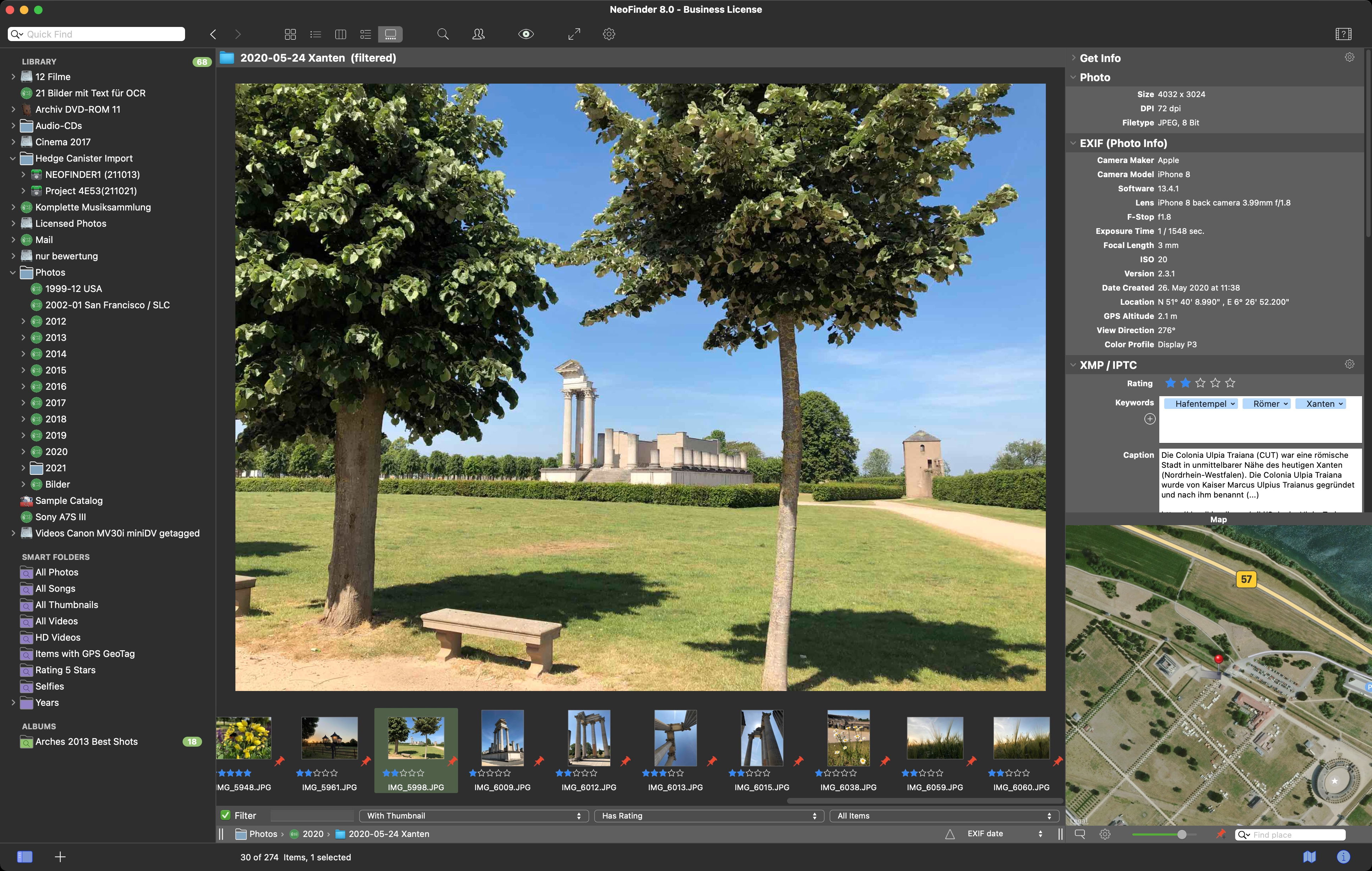

#ALTERNATE MAC APP NEOFINDER UPDATE#
I use GraphicConverter (Mac only) for a lot of my front end photo work and it is nice to see if I edit, say, IPTC in GC it will show up in NeoFinder on addition or if you update metadata. NeoFinder will update its own database with any new metadata in the file or sidecar as well as writing anything new from its database into the file or the XMP sidecar. When you right click on a photo, pick Metadata then from that submenu pick Update Metadata. So the good news is that it is fairly straight forward to either write out new metadata you entered with NeoFinder or to pull in any new metadata updated by another application. Just use NeoFinder, it offers you a brand new Truncate JPG files feature, which will help you reclaim that wasted space.Īlso, Thorsten Lemke, the developer of Graphic Converter has released a new version of the venerable Graphic Converter with the option to remove this unwanted empty data from the JPG files, to be found in the Metadata context menu.OK downloaded NeoFinder and checking it out. It is still present in macOS 10.15.5.īut even if Apple fixes this bug, all files that have already been transferred and converted still contain the wasted space.ĭear Apple: Please stop releasing major macOS updates every year. From what we saw, this bug was already present in macOS 10.13, maybe in macOS 10.12 as well. We have notified Apple of this new bug in amework. While we initially thought, this bug was inside of Apples Image Capture, it turned out that all other macOS applications that use Apples amework are affected as well.Īpples Photos.app internally only stores the actual HEIC files in its hidden data folder, and manually exports them to JPEG if you drag one of these into the Finder. In our own photo library, we have located more than 12000 files with about 20 GB of wasted space! We used NeoFinder to search for JPG files from the iPhone 8, which is causing the trouble. For 5000 photo files, that is 7.5 GB already, for nothing. With just 1000 photos, for example, this bug already eats 1.5 GB off your precious and very expensive SSD disk space.

Such a small disk is quickly filled with totally wasted empty data. Of course, this is a colossal waste of space, especially considering that Apple is seriously still selling new Macs with a ridiculously tiny 128 GB internal SSD. Here is how the content at the end of every single JPG file created by Apples buggy Image Capture.app looks like: We found that massive bug by pure chance when working on further improving the metadata editing capabilities in NeoFinder, using a so-called Hex-Editor " Hex Fiend ". Other applications will simply silently convert your iOS HEIC photos to JPG, which also triggers the bug.īecause what is also does is to add more than 1.5 MB of totally empty data to every single JPG photo file it creates on your Mac! This requires you to uncheck the "Keep Originals" option in the settings for that iOS device, as shown here, in Apples Image Capture.Īpples Image Capture will then happily convert the HEIF files to the more compatible JPG format for you, when they are copied to your Mac. It will NOT happen if you use the "Most Compatible" setting there. It only happens if you use the "High Efficiency" format in the Camera settings of your iPhone or iPad.

If you connect an iPhone or iPad to your Mac, and use Image Capture, Adobe Lightroom, Graphic Converter, Affinity Photo, or even the old PhaseOne MediaPro or Apples old iPhoto or Aperture to transfer the photos to your Mac, you have the option to convert the HEIC photos taken by iOS to more standard JPG files. How Apple is filling your hard drive with unwanted empty data.īy pure chance, we have discovered a very disturbing bug that is able to quickly fill your macOS volumes with unwanted empty data. Note: This post has been rewritten and updated with new information on May 5, 2020.

Update December 3, 2020: This glaring bug is still not fixed by Apple in macOS 11.1 beta, and iOS 14.2. Dear Apple: This is really bad customer service. Update February 3, 2021: No, Apple has NOT fixed this massive bug in macOS 11.2, much less in iOS 14.4. Another macOS bug in Image Capture and others


 0 kommentar(er)
0 kommentar(er)
